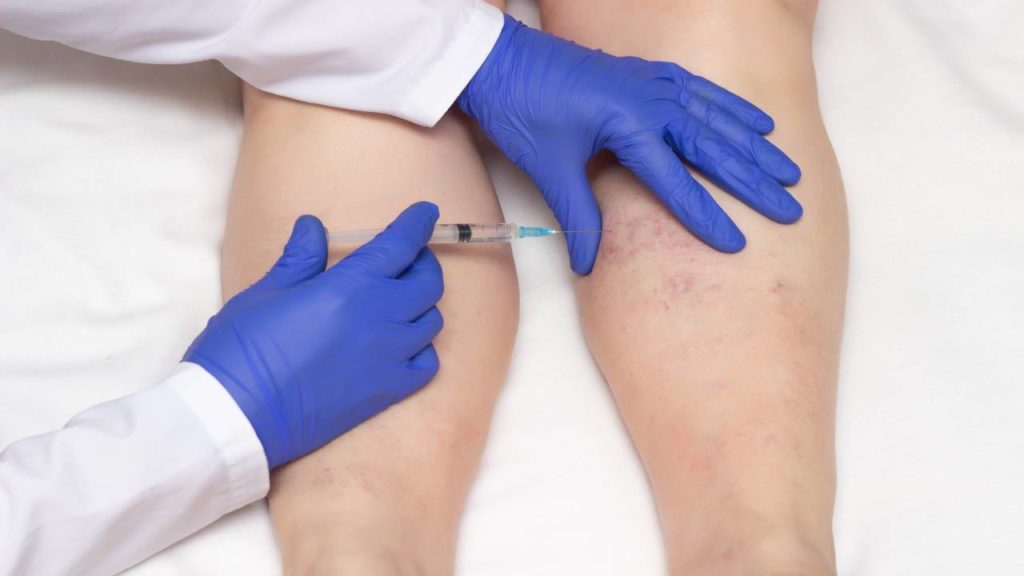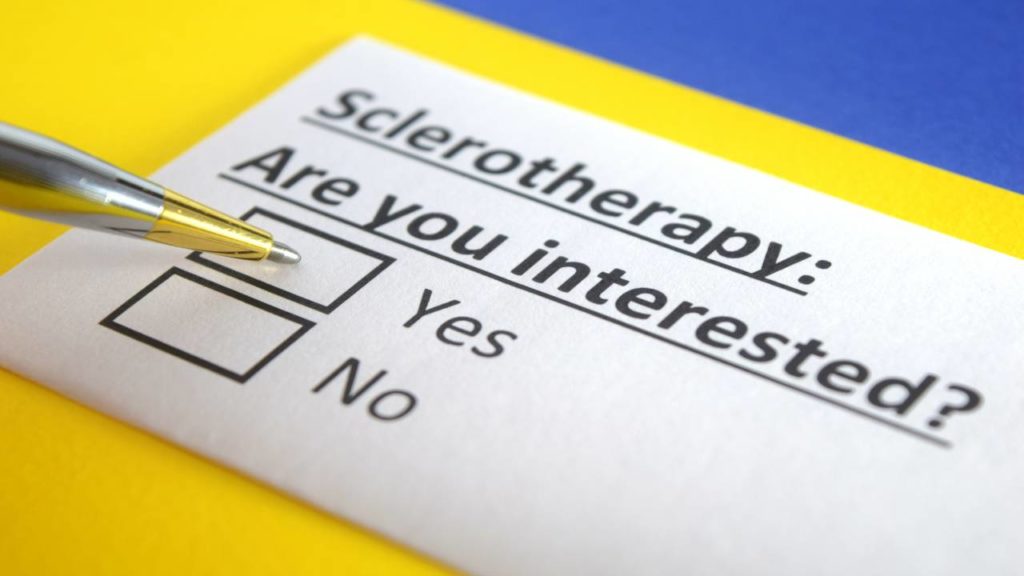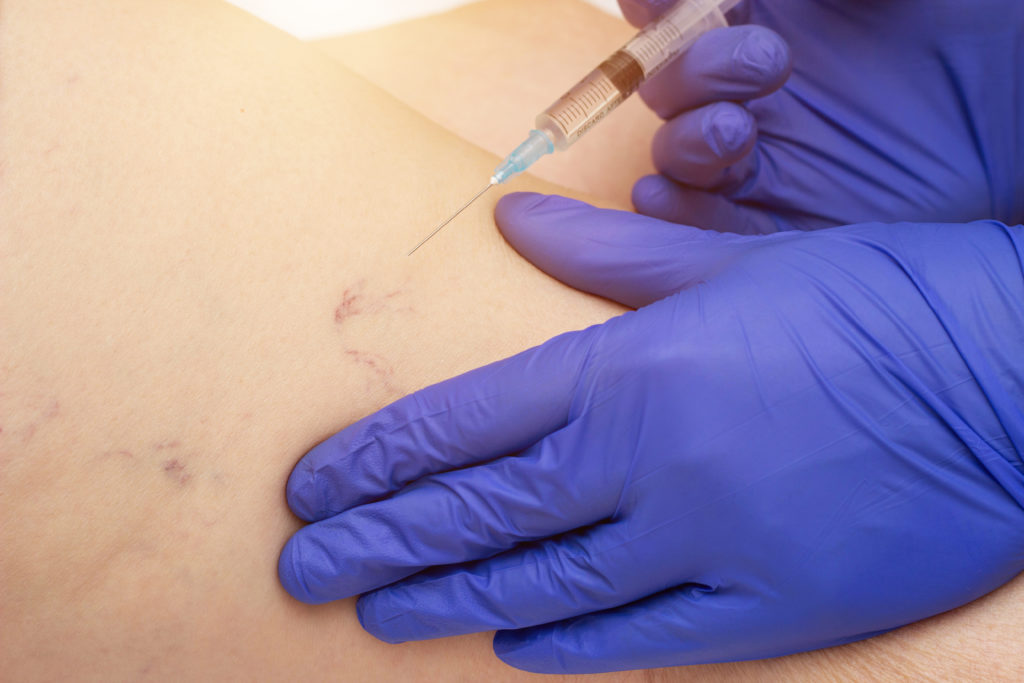Table of Contents
When treating vein-related conditions such as varicose veins or spider veins, vein therapy has become an increasingly popular choice for patients seeking relief from uncomfortable symptoms and aesthetic concerns.
While vein therapy can be highly effective in treating these conditions, the number of sessions required for optimal results can vary depending on several factors. Understanding these factors and the recommended number of sessions for different types of vein therapy can support patients in making educated decisions about their treatment plans and achieving the best possible outcomes.
What Are Varicose Veins And Spider Veins?
Varicose veins are caused by the enlargement of a vein, which can give them a twisted and bulging appearance that often looks like ropes. They can appear blue, red, or flesh-colored, commonly found in areas such as the thighs, backs of calves, and inside the leg. In some cases, varicose veins can also develop in the genital area and backside during pregnancy.
Spider veins, on the other hand, are much more miniature than varicose veins and sit closer to the skin’s surface. They often appear as red or blue lines that branch out in a jagged, web-like pattern, resembling tree branches or spider webs. Spider veins can appear on the legs and face, covering a small or potentially a large area. While they are generally considered a cosmetic concern, they can sometimes cause discomfort or pain.
Factors Affecting The Number Of Sessions Required For Vein Therapy
Vein therapy has become an increasingly popular choice for treating vein-related conditions, such as varicose veins or spider veins. However, the number of sessions required for optimal results can vary depending on several factors. These include:
- The Severity of the Vein Condition: The severity of the vein condition being treated is a primary factor in determining the number of sessions required for vein therapy. More severe cases of varicose or spider veins may require more sessions to fully treat, while less severe cases may require fewer sessions.
- Type of Vein Therapy Used: Different types of vein therapy require other numbers of sessions to achieve optimal results. Sclerotherapy, endovenous laser therapy (EVLT), radiofrequency ablation (RFA), and Venaseal are common types of vein therapy, and each may require a different number of sessions.
- Size and Location of Veins Being Treated: The size and location of the veins being treated can also impact the number of sessions required for vein therapy. More prominent or deeper veins in the body may require more treatment sessions than fully smaller or surface veins.
- Overall Health of the Patient: The patient’s overall health can also play a role in determining the number of sessions required for vein therapy. Patients with underlying medical conditions or poor circulation may require more sessions for optimal results.
- Patient Compliance with Treatment Plan: Patient compliance with the treatment plan can also impact the number of sessions required for vein therapy. Patients who diligently attend all recommended sessions and follow their doctor’s instructions for post-treatment care may require fewer sessions than those who do not comply with their treatment plan.
Recommended Number Of Sessions For Different Types of Vein Therapy
Different types of vein therapy require other numbers of sessions to achieve optimal results. Here are the recommended numbers of sessions for two common types of vein therapy:
- Sclerotherapy: Sclerotherapy is a minimally invasive approach that involves injecting a solution straight into the affected vein. The solution causes the vein to collapse and eventually disappear. For spider veins, one to three sessions of sclerotherapy may be sufficient to achieve optimal results. More sessions may be required for more prominent veins, such as varicose veins. The number of sessions needed for sclerotherapy may vary depending on the severity of the vein condition and other factors.
- Endovenous Laser Ablation (EVLA): Endovenous laser ablation (EVLA) is a procedure that uses laser energy to heat and close off the affected vein. Typically, only one session of EVLA is required to achieve optimal results. However, some patients may require a second session, particularly if they have multiple affected veins.
Remember that the recommended number of sessions for vein therapy may vary from patient to patient. Adherence to the recommended treatment plan is crucial for achieving optimal results. Patients should work with their vein specialists to concoct a personalized restorative plan considering their needs and circumstances.
Who Needs Vein Therapy The Most?
Vein therapy can be an effective treatment option for individuals experiencing uncomfortable symptoms or aesthetic concerns related to vein-related conditions. While anyone can benefit from vein therapy, certain groups of people may need it the most. These include:
- Individuals with Varicose Veins: Varicose veins are enlarged, twisted veins often visible through the skin. They can cause discomfort, pain, and swelling in the affected area. Individuals with varicose veins may benefit from vein therapy to alleviate these symptoms and improve the appearance of their veins.
- Individuals with Spider Veins: Spider veins are small, thin veins often visible beneath the skin’s surface. They can be a cosmetic concern for many individuals. While they are generally not serious health problems, they can sometimes cause discomfort or pain. Vein therapy can be an effective treatment option for individuals with spider veins who wish to improve the appearance of their veins or alleviate any discomfort or pain.
- Pregnant Women: Pregnancy can put additional pressure on the veins in the legs, leading to the development of varicose or spider veins. Vein therapy can be a safe and effective treatment option for pregnant women experiencing uncomfortable symptoms related to vein-related conditions.
- Individuals with a Family History of Vein-Related Conditions: Individuals with a family history of vein-related conditions may be at a higher risk of acquiring varicose or spider veins. Vein therapy may be recommended as a preventative measure to reduce the risk of developing these conditions or to treat them in their early stages.
Takeaway
If you’re experiencing discomfort or aesthetic concerns related to vein-related conditions, don’t hesitate to seek treatment from a qualified vein specialist. At OC Cosmetic and Vein Center, Dr. Parsa offers a range of advanced vein therapy options to help you achieve optimal results. Whether you’re dealing with varicose veins, spider veins, or other vein-related conditions, Dr. Parsa can work with you to develop a personalized treatment plan that addresses your unique needs and circumstances.
So if you’re ready to take the first step towards healthier, more beautiful legs, contact OC Cosmetic and Vein Center to schedule a consultation with Dr. Parsa today! We also offer other services if you’re interested.




